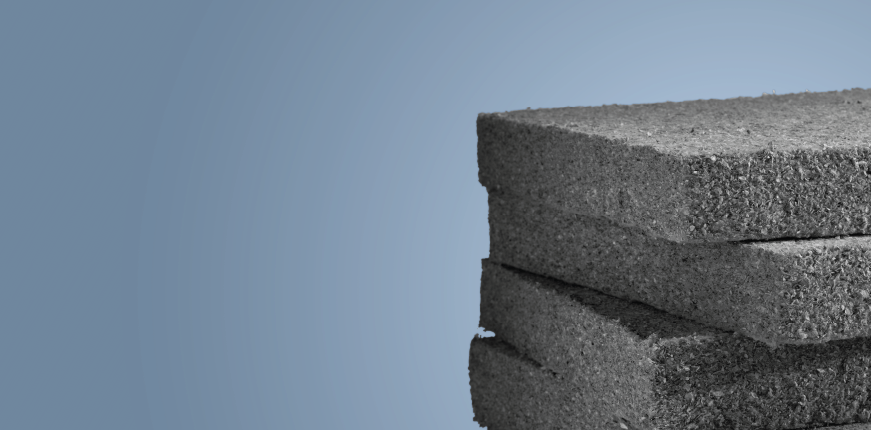Recycled glass and sand serve as the essential ingredients for cellular glass insulation. Cellular glass also includes mineral compounds and other organic components.
Do you want to learn more about cellular glass insulation and its benefits? If so, you’ve come to the right place. Here, we’re sharing everything you need to know about this type of thermal insulation.
What is Cellular Glass Insulation?
What is cellular glass insulation? It’s a lightweight, low-embodied carbon building material.
Cellular glass is a high-performance aggregate that’s used in the construction sector. It’s often used as a load-bearing structural fill. Sub-slab insulation, green roof fill, and civil infrastructure applications are a few examples of uses.
Cellular glass insulation takes the role of rigid foam board in insulation. This removes the need for petrochemicals in construction.
Cellular glass gets used in green roof installations as a lightweight fill. This lowers the weight load on building structures. As a result, it enables innovative landscape architectural solutions.
Cellular glass functions as an inert, non-leaching fill in construction applications. Additionally, it’s readily transported to sites and substitutes for crushed stone aggregates.
This lowers the overall embodied carbon footprint of projects. Why? Because it is so lightweight!
Benefits of Cellular Glass Insulation
There are numerous uses for cellular glass. Both insulations for green roofs and fireproof construction panels get made of it.
Other applications include insulating specialized piping systems and subterranean steam distribution. But what are the benefits? Here are just a few:
- Resistant to moisture
- Resistant to fire
- No permeability for vapor
- Unaffected by most corrosive conditions and common chemicals
- Effective in conditions between -450°F and 900°F.
- Wider temperature range than fiberglass, mineral wool, and calcium silicate
- Sound-absorbing qualities.
- Will not expand, contract, warp, or distort
- Resistant to pests
- Extremely resilient and long-lasting
- Safe for the environment
- No HCFCs and CFCs
The demand for practical insulating goods with a positive environmental impact keeps growing. That’s why sustainable design in industrial insulation systems is a significant consideration. The outstanding physical qualities of cellular glass insulation ultimately benefit the user.
How is Cellular Glass Insulation Produced?
The name “cellular glass insulation” refers to how the product is made.
To begin, a foaming agent gets combined with powdered recycled glass cullet. Then, a belt furnace with a firing temperature of 1,650°F receives the mixture. When the mixture foams at that temperature, the glass powder softens. This forms a network of closed-cell micropores.
The cellular glass sheet cracks into aggregate-sized pieces as it leaves the kiln. This is due to thermal stress. These pieces are then fed into a bunker for storage before getting transported to sites.
Cellular Glass vs. Foam Glass
Foam glass aggregate or glass gravel are other names for cellular glass insulation. They are the same thing, carrying glass characteristics in the form of a high-performance aggregate.
In Europe, where it had gotten produced for almost 30 years, it is most frequently referred to as cellular glass.
For residential applications, the name foam glass gravel gets used in American markets. Foam glass aggregate gets used for civil projects.
What is Insulation?
Insulation is a substance used to stop the transfer of heat or sound from one place to another. It is typically used to confine heat and/or sound to particular areas of your home or to keep them inside or outside.
Although there are many other ways that insulation might function, it most frequently uses materials that contain millions of small air spaces. Most types of insulation have high thermal resistance because still air is a very effective insulator and is trapped in pockets.
The first type of insulation that comes to mind is probably a batt, commonly made of glass wool or rock wool. Batts are thin, fluffy-looking panels of material installed inside your home’s framework, either in the ceiling or in wall cavities. Batts are comprised of fibrous materials and function by encasing tiny air bubbles within their fibers.
The blow-in cellulose insulation (which is simpler to install if the house has already been built), polyurethane foam, polyester matting, and reflective foil are other common types of insulation. Each type has distinct benefits and drawbacks and functions differently to trap or repel heat.
What is Thermal Insulation?
When people hear the word “insulation,” they typically envision this type of insulation. Most homes have thermal insulation in their walls and ceilings, particularly the exterior walls, where heat is most likely to be gained or lost.
The basic concept of thermal insulation is to keep one side of the insulation warmer than the other. Your insulation must be used in conjunction with the appropriate passive design principles if you live in a region with changing weather throughout the year. Your insulation will be included in the design with that in mind if it is constantly hot or cold where you live.
Utilizing materials with extremely low heat conductivity is the foundation of thermal insulation. These substances are referred to as thermal insulators. Wool, fiberglass, rock wool, polystyrene, and polyurethane are examples of common thermal insulators. These substances are excellent thermal insulators because they are very bad heat conductors.
Now You Know About Cellular Glass Insulation
Industrial insulation systems must be designed sustainably. After all, there is a growing need for insulating goods with a positive environmental impact. Due to this, cellular glass insulation is becoming increasingly popular.
Now that you know all about cellular glass insulation and its benefits, you’re more informed about the best building materials. To learn more about our project solutions, click here!





